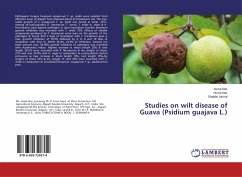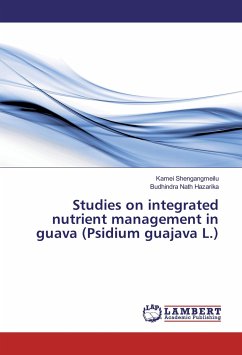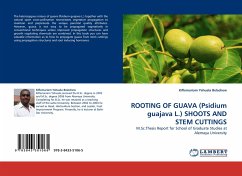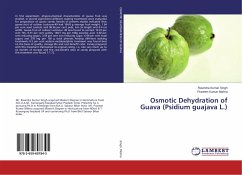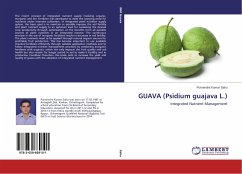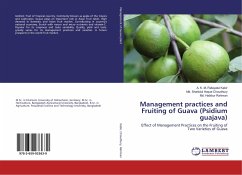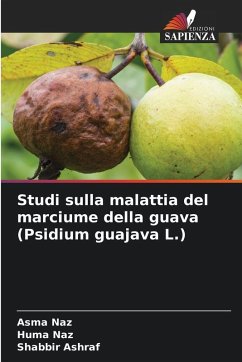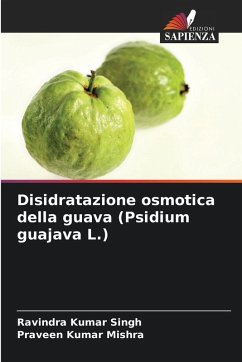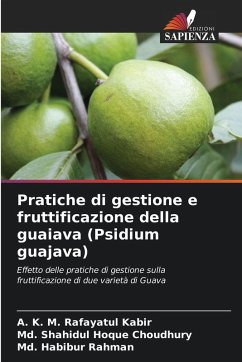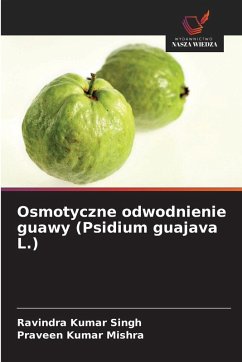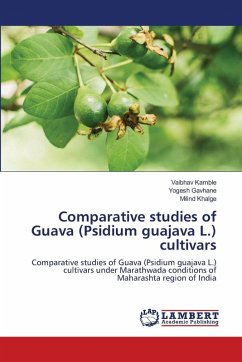
Comparative studies of Guava (Psidium guajava L.) cultivars
Comparative studies of Guava (Psidium guajava L.) cultivars under Marathwada conditions of Maharashta region of India
Versandkostenfrei!
Versandfertig in 6-10 Tagen
29,99 €
inkl. MwSt.

PAYBACK Punkte
15 °P sammeln!
One of the most significant tropical and subtropical fruit crops is guava (Psidium guajava L.), sometimes referred to as the "apple of the tropics." It is a member of the Myrtaceae family of plants. It is the fourth most important fruit crop in area and production after mango, banana and citrus. It has chromosome number 2n=2x=22 (n=11). Guava is native to tropical America, which stretches from Mexico to Peru. Due to their shade-loving habits, propensity to grow fruit, high vitamin "C" content, delicious flavor and pleasant perfume, they have progressively gained commercial importance in many n...
One of the most significant tropical and subtropical fruit crops is guava (Psidium guajava L.), sometimes referred to as the "apple of the tropics." It is a member of the Myrtaceae family of plants. It is the fourth most important fruit crop in area and production after mango, banana and citrus. It has chromosome number 2n=2x=22 (n=11). Guava is native to tropical America, which stretches from Mexico to Peru. Due to their shade-loving habits, propensity to grow fruit, high vitamin "C" content, delicious flavor and pleasant perfume, they have progressively gained commercial importance in many nations. Several workers have documented variations in the growth parameters, yield and fruit quality reported by multiple workers. These characteristics exhibit differences not only among different varieties but also across various geographical locations. The enhancement of crops is significantly influenced by the level of both genotypic and phenotypic variability within populations. Studieson variability are crucial for any crop, as a broader range of variability offers more opportunities for selecting desirable traits.



